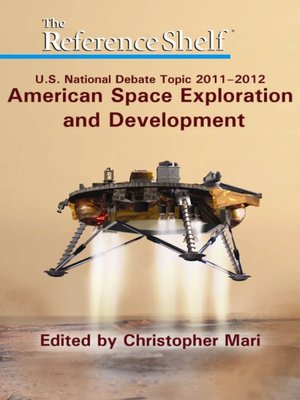The Reference Shelf: U.S. National Debate Topic 2011-2012
ebook ∣ American Space Exploration & Development · The Reference Shelf
By Christopher Mari

Sign up to save your library
With an OverDrive account, you can save your favorite libraries for at-a-glance information about availability. Find out more about OverDrive accounts.
Find this title in Libby, the library reading app by OverDrive.



Search for a digital library with this title
Title found at these libraries:
| Library Name | Distance |
|---|---|
| Loading... |
The U.S. space program and the agency that runs it, the National Aeronautics and Space Administration (NASA), are at a crossroads. While NASA’s robotic exploration of the solar system and beyond has succeeded brilliantly for decades, providing researchers with tremendous insights into the nature of our universe, the U.S. manned space program has been locked in low Earth orbit (LEO) since the early 1970s. When Apollo 17 lifted off from the moon in December 1972, America effectively abandoned the human exploration of other worlds, calling it quits after just six manned lunar landings.
This begs the question: What happened? Given mankind’s boundless curiosity and tendency to push the technological envelope, it seems odd that we were once capable of sending astronauts to the moon—and potentially other planets, such as Mars—but now no longer can. It’s especially perplexing when one considers that NASA’s “brand”—its very identity—centers on manned spaceflight. Alan Shepard’s first suborbital flight in 1961, John Glenn’s first orbit in 1962, Neil Armstrong’s first walk on the moon in 1969: These missions defined NASA for a generation of Americans. Despite the enormous scientific value of NASA’s unmanned probes, it’s the image of human beings blasting off into the cosmos that thrills young and old alike. There’s nothing like a human footprint on a foreign world to make one feel humbled, inspired, and awestruck, all at the same time.







